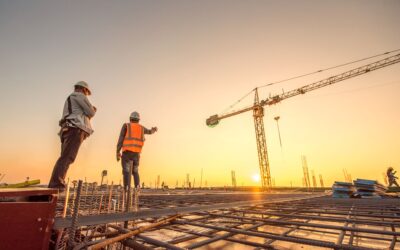Recent data from the Israeli real estate market reveals a paradox: despite a growing supply of apartments, prices continue to rise. The annual increase in apartment prices between July-August 2023 and the same period in 2024 was recorded at 5.8%. However, focusing solely on this figure overlooks the significant shifts in the real estate landscape, especially following November 2023. In the past year, the apartment price index surged by 7%, marking an annualized increase rate of nearly 11%.
A look at the supply side reveals a perplexing trend. By the end of July 2024, the Central Bureau of Statistics (CBS) reported that there were 69,430 unsold new housing units. This figure represents a 19% increase compared to July 2023, a 47% rise compared to the same month in 2022, and a staggering 53% jump from three years ago. Despite this unprecedented supply, prices continue to climb sharply.
This unusual situation suggests that the supply of apartments on paper does not align with the demand for specific types of housing. Many of the available units are not considered desirable by potential buyers. For instance, when purchasing new apartments, buyers often seek recently completed homes, while in the second-hand market, properties with added safety measures, such as protection from security threats, are in higher demand. As a result, many available units are either under construction or lack the necessary features, making them less appealing to buyers.
The housing supply crisis is exacerbated by long-standing government failures. Past administrations have not adequately addressed the need for urban renewal or implemented the necessary measures under initiatives like TAMA 38, aimed at improving building safety. Furthermore, the current government’s policies have led to a significant reduction in construction workers, further slowing down the pace of housing development. These challenges have contributed to the growing gap between housing supply and the demand for livable, desirable properties.
One notable trend is the increasing share of new apartments being sold. In the first seven months of 2024, new apartments accounted for 47% of all transactions. This shift is particularly evident in cities like Tel Aviv, where the number of new apartments sold tripled within seven months. Two-thirds of apartment buyers in Tel Aviv opted for new homes, while in Ramat Gan, over half of the buyers purchased new apartments. In southern cities like Ofakim and Sderot, where concerns over safety are more pronounced, the second-hand market is almost non-existent, with most buyers choosing newly constructed homes.
Apartment prices are not rising uniformly across Israel. Since November 2023, the Haifa district has seen the highest increase, with prices rising by 9.7%. Central Israel follows with a 7.8% rise, and Tel Aviv recorded a 7.2% increase. The northern district saw prices rise by 6.8%, the southern district by 4.4%, and Jerusalem by 2.9%.
Interestingly, the prices of new apartments rose by only about 3%, indicating that most of the price increases occurred in the second-hand apartment market, particularly for properties with added protection or other desirable features.
The rental market has also seen price increases, although at a more moderate pace. In August 2024, the rental price index increased by 0.7%, bringing the total increase since November 2023 to 3.5%. During the winter months, the rental market experienced a slowdown, with some areas even seeing slight decreases. However, rents picked up again during the summer months, reflecting the broader trend of rising housing costs.
Image credit: freepik.com





0 Comments